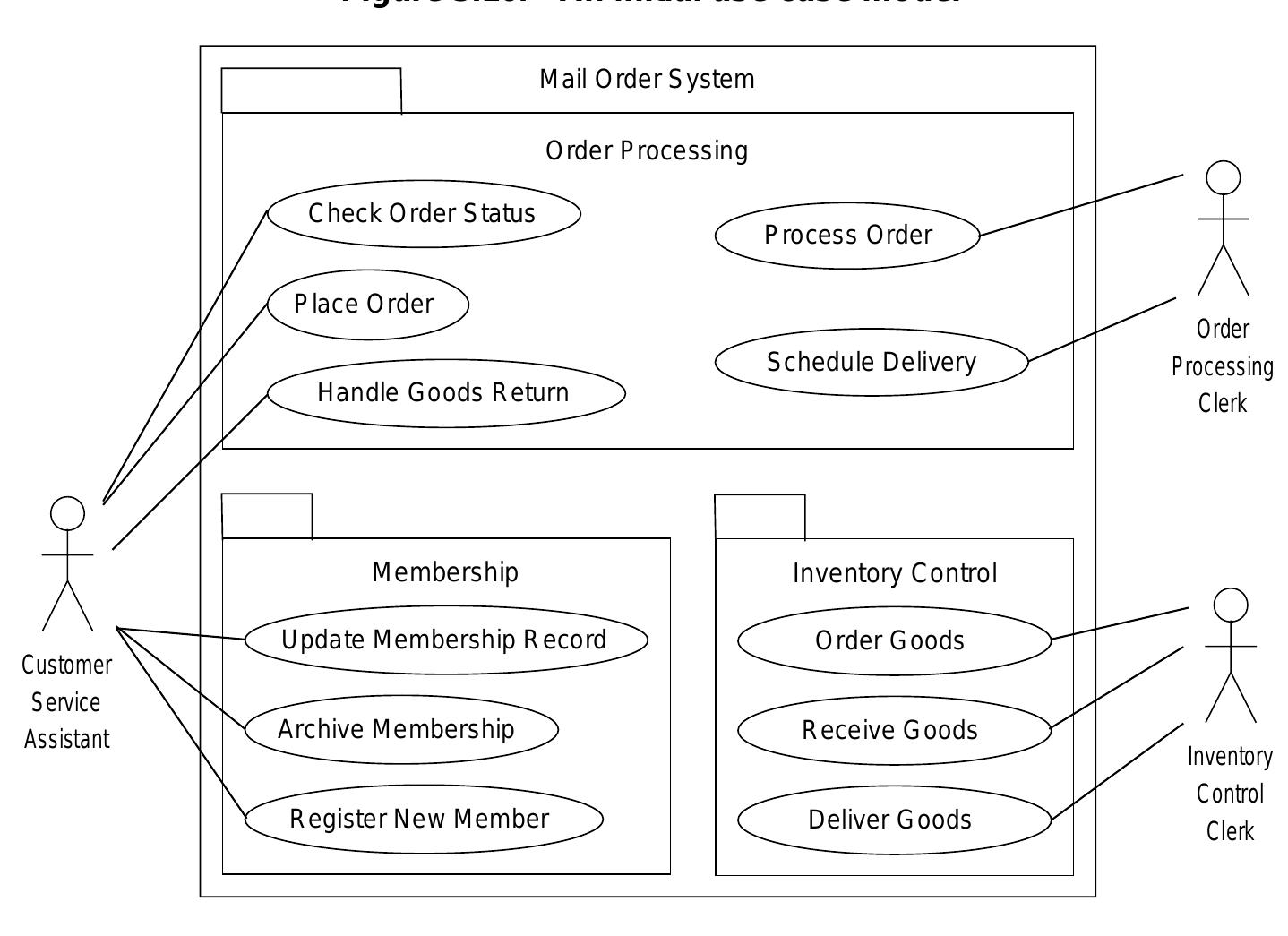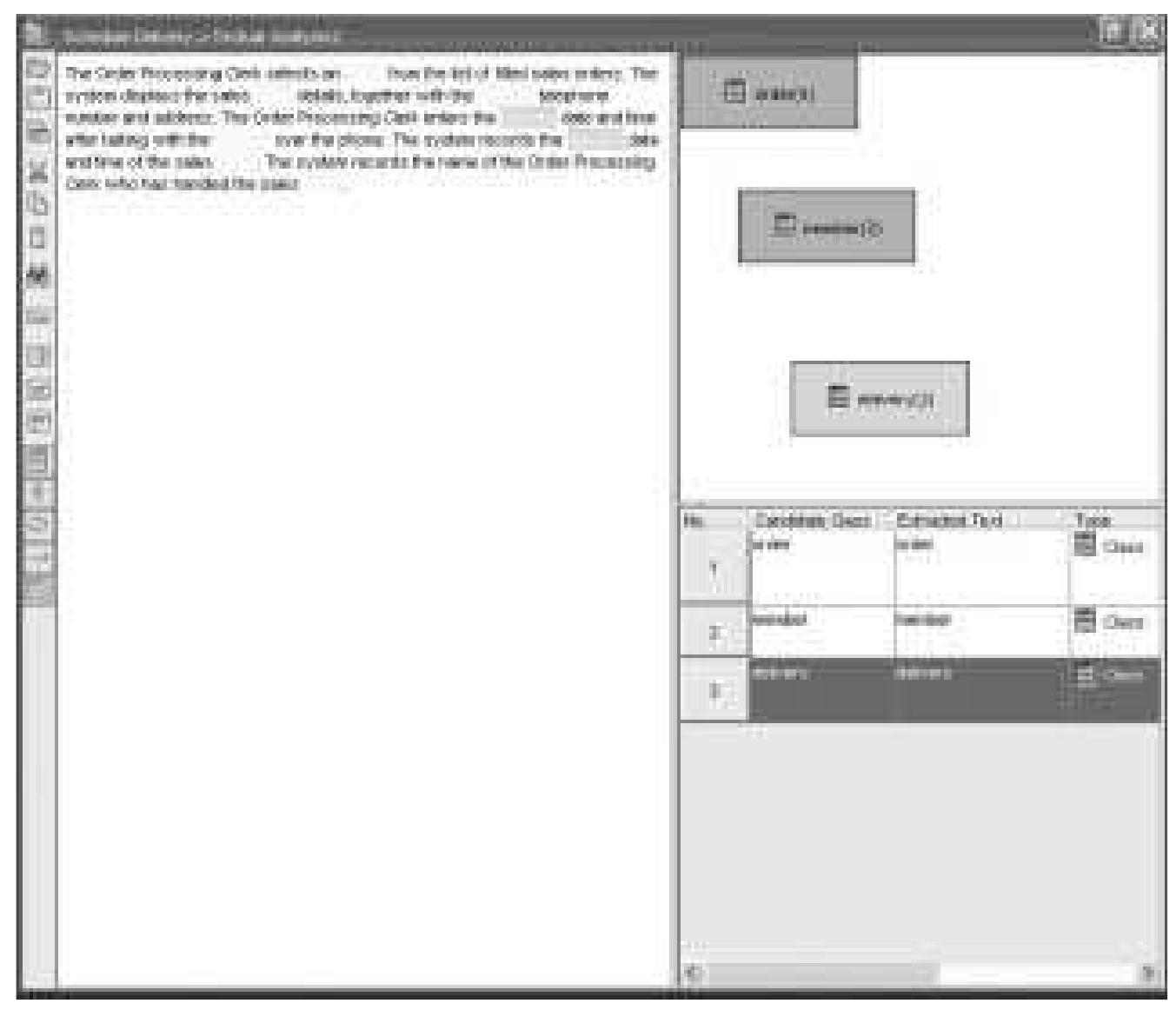Object-Oriented Technology
2005
Sign up for access to the world's latest research
Abstract
AI
AI
The paper explores the significance of use case modeling in the requirements elicitation process within object-oriented technology. It outlines the definition of requirements, common problems in defining them, and emphasizes the importance of capturing user interactions through use cases to ensure the system meets actual user needs. Furthermore, it provides insights into prioritizing use cases and techniques for developing effective use case descriptions.









































































Related papers
The distinction between requirements and specification is often confused in practice. This obstructs the system validation process, because it is unclear what exactly should be validated, and against what it should be validated. The reference model of Gunter et al. addresses this difficulty by providing a framework within which requirements can be distinguished from specification. It separates world phenomena from machine phenomena. However, it does not explain how the characterization can be used to help assure system validity.
2011 IEEE 34th Software Engineering Workshop, 2011
The software requirements engineering (RE) process is one of the key processes in software development. The aim of requirements engineering process is capturing, understanding and analyzing customer requirements. Today, use cases are widely used as a technique for specification of the functional requirements of the system. Even through use cases are widely used for specification of the functional requirements, their semantics are unclear that it is difficult to apply them to complex problems. In this paper we have proposed SilabReq language for use cases specification for a standard information system. It is developed under XText framework. The benefits of using SilabReq for use cases specification are reflected in the fact that software requirements are considered as a model. Thereafter, the use cases can be used for automatic processing and analyzing. (Abstract)
International Conference Image Processing, Computers and Industrial Engineering (ICICIE'2014) Jan. 15-16, 2014 Kuala Lumpur (Malaysia), 2014
Initial stage in software development lifecycle is requirements gathering steps which results a text-based requirements specification document. Common problem in analyzing those requirements is the difficulty of identifying the functionality of the software, especially when there are so many descriptions elicited from the gathering activities. The objective of this research is analyzing the process to identify actor and use case of the system to be built. Since the requirements were described in the form of natural language, therefore it needs natural language processing. The proposed solution is simplification form by only doing the syntax analysis to provide a quick response. The tool is built in Java by accept active sentences in English. The evaluation result proves that the tool is able to list actor and use cases from a given system description. Possible future work is able to process passive sentence with complex structure not only in the Subject-Predicate-Object form.
2000
Standardization experts in object modelling are having difficulties with defining the concept of role; for example, they are not sure of whether role is a type or an instance concept. This issue is a source of confusion in the UML standard, and prevents ISO experts to reach consensus and finalize a language for ODP enterprise modelling. In this paper, we make an in-depth analysis of the problem, find its likely causes, and come up with a proposal for a new ODP definition of role, as well as with definitions of related concepts. We expect our definitions and our results not only to achieve consensus among ISO delegates, but also to be a basis for improving the UML standard and related software engineering processes.
Use cases are narrative description of interactions between users and a software system. They are primary used to specify functional system requirements. Despite the fact that use cases are narrative, there is no standard that specifies what textual specification of use case should like. However, the integration of use cases in a Model Driven Engineering process requires more rigorous specifications. The specification of use cases at different levels of abstraction is needed because of the large number of stakeholders involved in the software development process. We propose use cases specification at different levels of abstraction to promote better integration, communication and understanding among the involved stakeholders. We still discuss that base on this approach different software development artifacts such as domain model, system operations, user interface design can be automatically generated or validated.
The Journal of Object Technology, 2002
Because all other activities are influenced or driven by it, requirements engineering is arguably the most important activity performed during the development of softwareintensive systems. Yet, there has been remarkably little standardization on what requirements engineering is and how it should be done beyond the growing de facto standard of using some kind of use case modeling for functional requirements. The first two articles of this column lay the foundation for my future columns on requirements engineering by defining the reusable requirements related process components of the OPEN Process Framework (OPF) and by providing you with an industry-standard terminology for organizing and communicating requirements engineering concepts.
MCIS 2008 Proceedings, 2008
The contribution of the requirements engineering in the success of projects is incontestable and it has been proved, through studies and statistics that succeed or fail a project depends generally on requirements engineering. This domain became the centre of interest of a big number of researchers to present the most adequate model and process to succeed the requirements engineering and so succeed the project. Requirements engineering is done according to a process spread all along the life cycle of the system and that aims to provide methods, technologies and tools allow developing and implanting some computing systems providing the services and the information expected by their users, demanded by their acquirers, and compatible with their functioning environment. Requirements engineering process is executed on three principals steps: First, the requirements elicitation to identify future system needs .Then, the specification and the requirements documentation validated or modified following a discussion between the different actors of the process. The end product which is an outfit of models that allows to take into account the actors' point of view, represent not only the final specifications but also the intermediate results. This permits having coherent and well structured documents. The validation and verification of the requirement specification is the final step. On this article, after a presentation of principal challenges that requirements engineering face and notably in specification step, we will define the fundamental notion of a role that will allow us to surround a system in all his perspectives : the organizational, the functional and even the intentional, etc. Then, after a study of some models of requirements engineering we will propose a model of process of requirements engineering with focusing on role notation and its participation in the different process steps.
2004
Latest research results have shown that requirements errors have a prolonged impact on software development and that they are more expensive to fix during later stages than early stages in software development. Use case diagrams in UML are used to give requirements for a software system, but all descriptions for each use case are written in informal language. In this paper, we propose a new language HCL (High-Level Constraint Language) to which any requirement model given by use case diagrams can be mapped. Not only is the language HCL based on a formal language but also the requirement model written in HCL can be executed. Many errors occurring during requirements analysis and design can be detected by means of execution.
1999
In many organizations, there has been a move toward the use of object-oriented methods for the development of information systems. Little is understood, or reported on the basis of research, of the use of object-oriented methods by practicing professionals in the production of requirements specifications for commercial or industrial sized projects. In this paper, we outline a conceptual framework of "what might be happening" in professional object-oriented requirements engineering based on the common characteristics of published, well known object-oriented methods. We then describe a research project and the findings from a set of six case studies that have been undertaken that examine professional practice from the standpoint of the epistemology contained in the conceptual model. In these studies, it was found that the more formal models of objectorientation were rarely used to validate, or even clarify, the specification with clients or users. Rather, analysts tended to use informal models, such as use cases or ad hoc diagrams, to communicate the specification to users. Formal models are more often used internally within the analysis team and for communicating the specification to the design team.

Loading Preview
Sorry, preview is currently unavailable. You can download the paper by clicking the button above.
 shashank nawathe
shashank nawathe